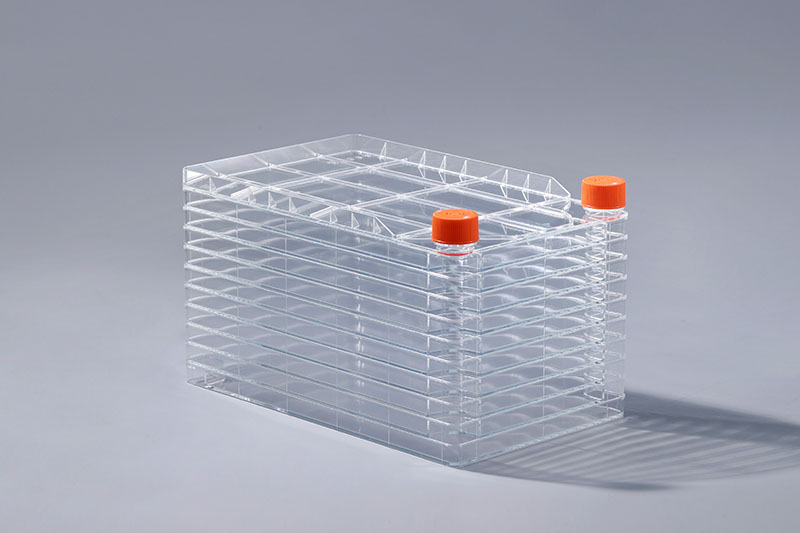В целом, клетки с сильным метаболизмом и быстрым ростом (например, опухолевые клетки) следует более низкая концентрация; в то время как клетки нормальной ткани растут медленно и их метаболизм недостаточно энергичен, концентрация инокулята может быть выше; Для экстренных случаев прививка может быть ниже; иногда, чтобы облегчить наблюдение за морфологией клеток, концентрацию инокулята также можно соответствующим образом уменьшить. Обычные клетки могут быть высеяны в соответствии с количеством клеток на единицу площади клеточной фабрики, умноженным на используемую площадь культуры клеточной фабрики, а затем разделенным на коэффициент высева культивируемых клеток. Слишком высокое или слишком низкое количество инокуляционных клеток не способствует размножению клеток. Соответствующее количество клеточной инокуляции является предпосылкой для обеспечения нормального роста клеток.Технология культивирования играет важную роль в области производства моноклональных антител и вакцин. При культивировании клеток на него будут влиять различные факторы, среди которых плотность инокуляции клеток также будет влиять на процесс культивирования клеток. оказывает непосредственное влияние на рост клеток. Соответствующая плотность посева может способствовать лучшей пролиферации клеток. Слишком высокая или слишком низкая плотность инокуляции не способствует росту и пролиферации клеток. Как выбрать подходящую концентрацию инокуляции, следует определять в соответствии с клеточным метаболизмом, скоростью роста и размножения и потребностями работы.
Плотность высева клеток является важным фактором, влияющим на культивируемые клетки клеточной фабрики. Только контролируя соответствующую плотность, эксперимент с клеточной культурой может быть проведен гладко.
Generally speaking, cells with strong metabolism and fast growth (such as tumor cells) should be inoculated at a lower concentration; while normal tissue cells grow slowly and their metabolism is not vigorous enough, the inoculation concentration may be higher; For emergency use, the inoculation can be lower; sometimes in order to facilitate the observation of cell morphology, the inoculation concentration can also be appropriately reduced. Ordinary cells can be seeded according to the number of cells per unit area of the cell factory, multiplied by the cell factory culture area used, and then divided by the seeding ratio of cultured cells. Too high or too low inoculation amount of cells is not conducive to cell reproduction. Appropriate cell inoculation amount is the premise to ensure the normal growth of cells.
The cell seeding density is an important factor affecting the cultured cells of the cell factory. Only by controlling the appropriate density can the cell culture experiment be carried out smoothly.
The FAI climbed 5.9 percent year-on-year in the first 11 months of 2018, quickening from the 5.7-percent growth in Jan-Oct, the National Bureau of Statistics (NBS) said Friday in an online statement.
The key indicator of investment, dubbed a major growth driver, hit the bottom in August and has since started to rebound steadily.
In the face of emerging economic challenges home and abroad, China has stepped up efforts to stabilize investment, in particular rolling out measures to motivate private investors and channel funds into infrastructure.
Friday's data showed private investment, accounting for more than 60 percent of the total FAI, expanded by a brisk 8.7 percent.
NBS spokesperson Mao Shengyong said funds into weak economic links registered rapid increases as investment in environmental protection and agriculture jumped 42 percent and 12.5 percent respectively, much faster than the average.
In breakdown, investment in high-tech and equipment manufacturing remained vigorous with 16.1-percent and 11.6-percent increases respectively in the first 11 months. Infrastructure investment gained 3.7 percent, staying flat. Investment in property development rose 9.7 percent, also unchanged.
 English
English



















































